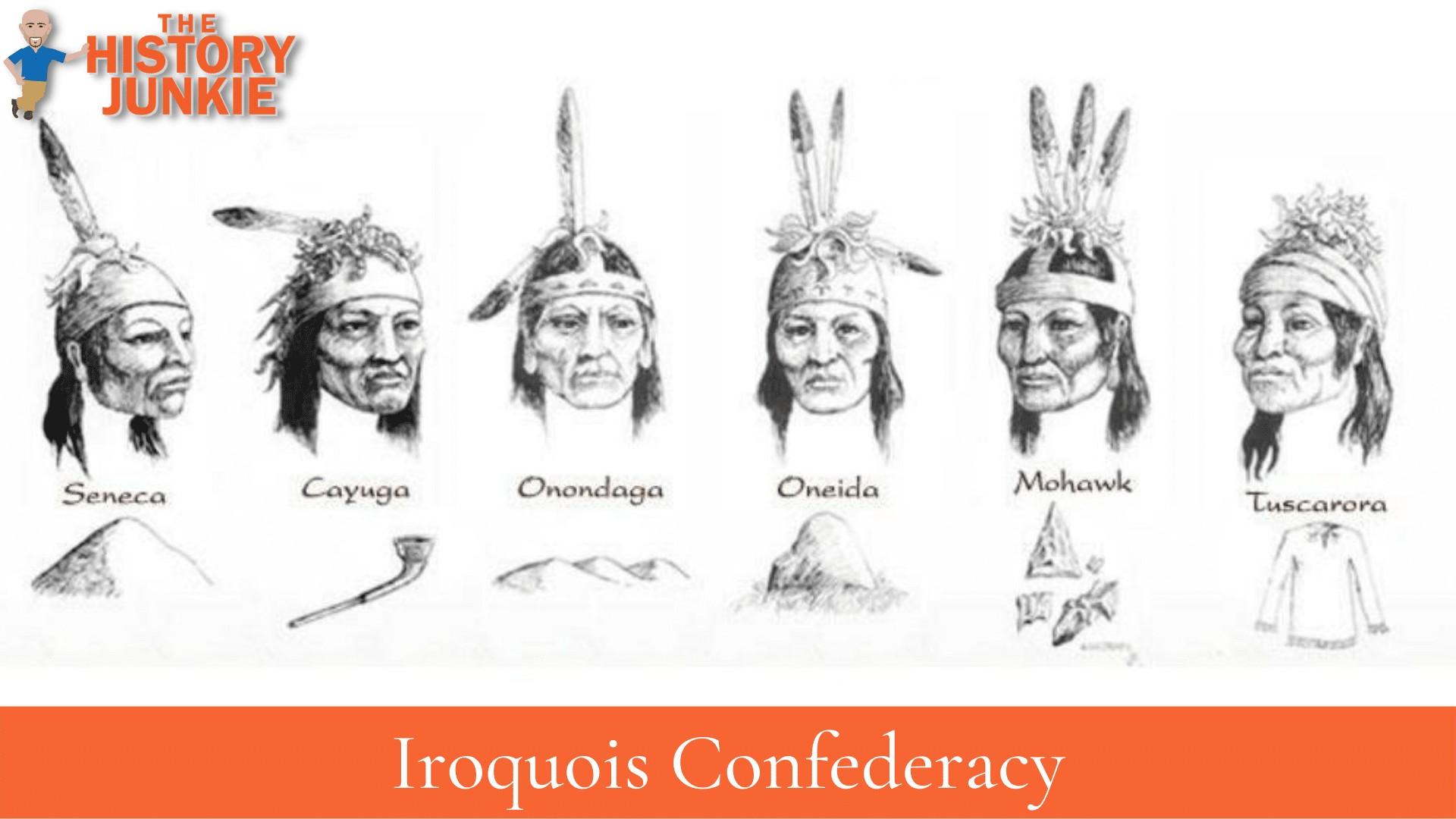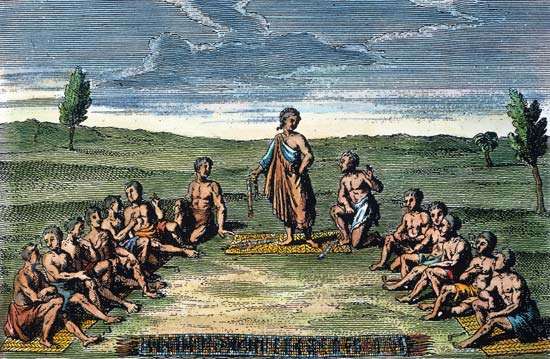The Iroquois Confederacy was a confederation of five and eventually six Indian tribes that populated upper New York state. The area they resided in played a crucial role during the French and Indian War, which placed a high value on the Iroquois nations. The five original nations consisted of the Mohawk, Oneida, Onondaga, Cayuga, and Seneca. In 1722, the confederacy expanded to include the Tuscarora tribe.
Jump to:
Iroquois Confederacy Facts and Culture: Origins

Most believe that the confederacy originated between 1570 and 1600 when Dekanawidah (born a Huron) persuaded Hawatha (Onondaga living among Mohawks) to abandon cannibalism and advance peace and order.
The emphasis on creating a universal law allowed the tribes to begin to create sanctions for confederation. Eventually, the tribes united in a common council composed of clan and village chiefs.
Each tribe had one vote, and each decision was required to be unanimous before it became official. The joint jurisdiction of 50 peace chiefs dealt with all civil affairs at the intertribal level.
The Iroquois Confederacy differed from other Native American confederacies or alliances in its practicality and effectiveness.
The practicality was shown in how they used an elaborate ritualized system that chose its leaders. The confederation was never dominated by a great individual personality, which allowed them to sustain success for centuries.
Also, while the tribes often acted in unison, the tribes had the freedom to govern themselves and would often act independently from each other.
This allowed each tribe to keep their own identity and rituals intact.
In the 1600s, the confederacy was concentrated in what is now upstate New York. The confederacy often had conflicts with the Mohican and Huron tribes, who had been supplied with guns by the Dutch traders.
Although the neighboring tribes held a technological advantage, the confederacy was able to hold its own.
The shift in power came when the Mohawk defeated the Mohican and put the Hudson River valley tribes and New England tribes under tribute for goods and wampum.
The Mohawk then began trading beaver pelts with the Dutch and English in exchange for firearms. However, over time, the beaver pelts were depleted, and the confederacy began to wage war on other tribes that were further out of the territory.
This resulted in the Iroquois dispersing the Huron, Tionontati, Neutral, and Erie tribes. By 1750, the Iroquois had expanded their territory to include many other tribes.

Iroquois Confederacy Facts and Culture: Colonial Era and Revolution
During the early colonial period, the Iroquois stood between the French and British from the Great Lakes to Albany. Their confederacy stopped the growth of the French settlements and also kept the British contained.
They were able to last in between two world powers for a century, which is incredible considering they could only field an army of 2,200. This autonomy would begin to fade during the American Revolution.
During the Revolution, a schism developed between the tribes when the Oneida and Tuscarora tribes sided with the Americans, and the rest, under Joseph Brant, sided when the British. Under Brant, the Iroquois attacked many isolated settlements and had some success against the Americans.
However, their morale was decimated in 1779 when the Americans launched the Sullivan Campaign. The Sullivan Campaign sent 4,000 Americans into Indian Territory, which pretty much wiped out any native support for the British during the Revolution.
The Second Treaty of Fort Stanwix was signed in 1784, and that officially ended the Iroquois Confederacy.
Iroquois Confederacy Facts and Culture: Online Resources
- Wikipedia - Iroquois
- Britannica - Iroquois Confederacy
- The Iroquois People Now
- Totalsga - Iroquois History
- Big Orrin - Iroquois
- Native Languages - Iroquois Words
- Native Americans in the American Revolution
- The History Junkie's Guide to Native Americans
- The History Junkie's List of Native American Tribes
- Iroquois: People of the Longhouse
- Encyclopedia of the Iroquois Confederacy
- The Six Nations Indian Museum
